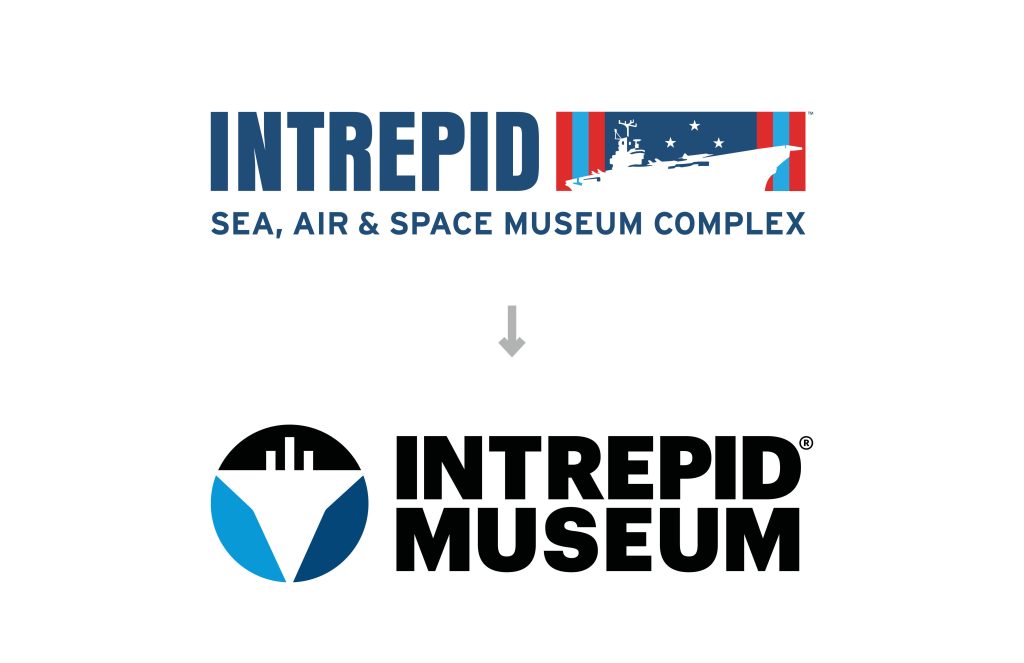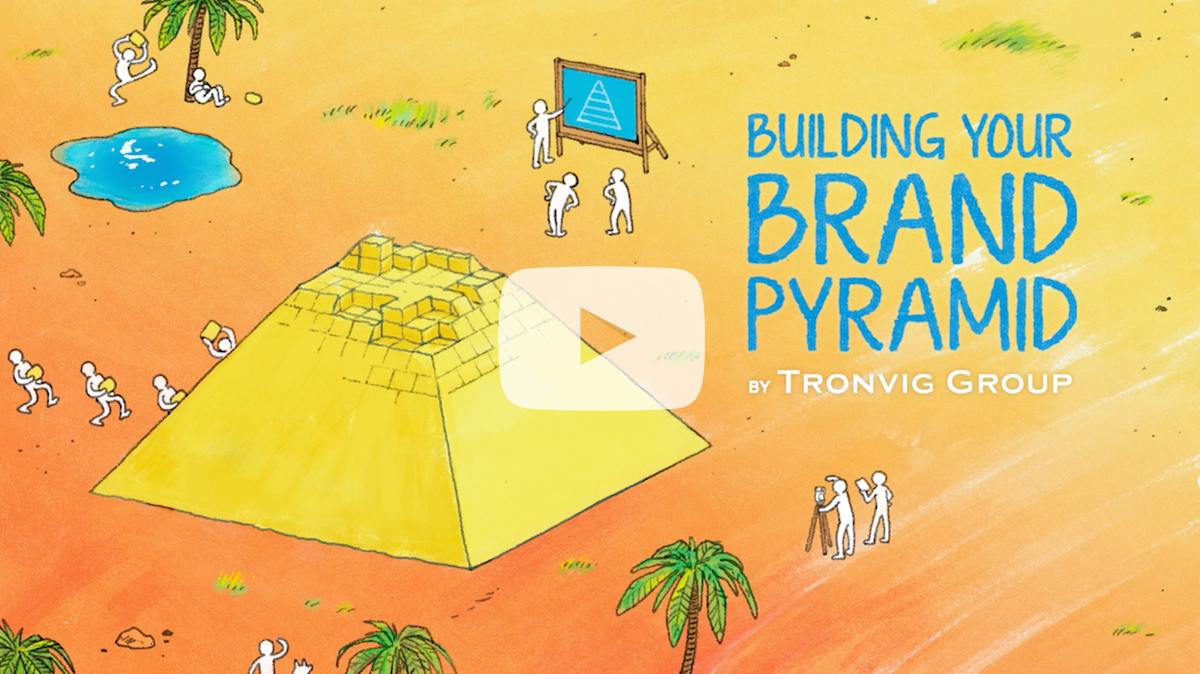I heard “I don’t need a brand. I need a product.” as James was retelling the story of a meeting with a prospect. I just had to write something about this.
Before discussing the validity of the quote, let’s look more closely at the words this prospect used. The terms brand and product are used casually, and we all know—or think we know—what they mean.
Brand
In the dictionary of the American Marketing Association, a brand is defined as a “name, term, design, symbol, or any other feature that identifies one seller’s good or service as distinct from those of other sellers.”
Our definition speaks more to how brands actually work: “It’s everything that brand consumers retain in their minds about a product or service.”
A brand is everything that brand consumers retain in their minds about a product or service.
James explains: “Brands are often evoked or symbolized using a visual handle or logo. The logo is a symbolic shorthand for all the past experience and messages you have received about that brand. Whatever distillation of these memories and experiences that you have somehow kept in your mind—that’s the brand.” Below are some examples of highly successful commercial brands as expressed through the shorthand of their logos: 3M, McDonald’s, Coca-Cola, Hewlett-Packard, Johnson & Johnson, and Apple.
Take a second, and look at them. In each case, you see and understand more than the simple shapes and colors of which they are comprised. You read into them your experience of that brand. The mark is a trigger for a mental model you have derived from your experience with that company or its products.

Product
Product is defined by the American Marketing Association as the following: “Bundle of attributes (frames, functions, benefits, and uses) capable of exchange or use; usually a mix of tangible and intangible forms. Thus a product may be an idea, a physical entity (a good), or a service, or any combination of the three. It exists for the purpose of exchange in the satisfaction of individual and organizational objectives.”
OK.
Now take a look at the following nearly universally known products belonging to the same consumer brands:

When saying “I don’t need a brand. I need a product.” the speaker was saying she doesn’t need McDonald’s, she just needs fries—any fries for that matter. She doesn’t need HP, she just needs a printer or computer—any printer or computer will do. She’s assuming her consumers will behave this way. I think they will not.
In the commercial world, I walk into a store and look at a printer, for example. If it has no brand, all I can see is this product. I can try to calculate whether or not I should buy it by evaluating what it looks like, what the product description says, and how expensive it is. Maybe I can test it by printing something, but that’s basically it. All I can see and all I can buy is this product, without knowing anything really about the quality of the materials used to build it, the precision and know-how of the people who made it, its reputation, and for how long I should expect it to last.
When seeing that logo, I understand much more than simply the thing sitting there in front of me.
When I am looking at an HP printer, I also see what it looks like, what the product description says, and how expensive it is. But when seeing that logo, I understand much more than simply the thing sitting there in front of me. I know that the company behind this product has been healthy and vibrant for many years (70 in fact). I also know that HP stands for integrity and honest, direct dealings. I may also know that it has persistently dedicated itself to providing its customers with the highest quality and value, and leads the marketplace by focusing on developing useful and often innovative products, and perhaps even that it holds a set of values that ensures responsibility in production and respect in the treatment of its employees. I may get all or some of this, but I also get the memory of the last HP printer that I owned and how it worked and how long it lasted. I get all this information in a cascade that pours forth in my mind from the HP mark.
It’s impossible to have a product without a brand of some kind.
Of course, for this one time, I might still take a chance on a no-brand printer. Others might as well; it could become a successful product. And—as is natural—in due time the demand for this product will wear off, or it will become obsolete, and other products will come along that do a better job of satisfying the same consumer needs. These brandless producers will then have to bring out a new product, but if they really refuse to invest in a brand, they eliminate the continuity between this first successful product and its successor. Nothing from the first product can be carried forward in the consumer’s mind to the next. It’s a clean slate. This new product has to make it entirely on its own. These non-branders will, in fact, have to start right at the beginning with every single new product. They cannot build a reputation or a history of success. They cannot evoke a promise of quality that accompanies their products in general. This is purely imaginary, of course. It’s impossible to have a product without a brand of some kind. It’s more a matter of if you want a brand that is intentional or one that is created primarily by others.
Any organization or company that aims for success in the long run will need to place some focus and energy on their brand.
Now, let’s turn the issue around. Can there be a brand without a product? What would you sell if not a product?
It turns out that it is at least theoretically possible to sell a brand without a product. Hessian is “an invader, an ode, a brand in waiting, a pitch to the market” and currently for sale for $18,000. The brand is the product (see definition above). In a more practical example, HP was originally founded by two engineers, Bill Hewlett and Dave Packard. When they first created their company, they did not have any specific product idea. They really did not know what they would actually be doing or selling. They eventually did come up with products to sell, and one of those products eventually got them on the road to being the successful company they are to build the brand that we know today. In effect, they did not start with a product, but with a brand—their name, Hewlett-Packard.
An effective brand enables a product to be much more than just a product, and a good product shows that a brand is more than marketing or empty promises.
Creating a brand without a product is theoretically possible, but it should be obvious that when discussing products and brands, we are not really talking about an either-or situation. While the two of them can exist separately, it makes little sense.
The right formula is good products supporting and supported by a strong brand. An effective brand enables a product to be much more than just a product, and a good product shows that a brand is more than marketing or empty promises. Together they provide the foundation for sustained success.
When it comes to commercial brands, I imagine the ideal interaction between products and a brand to start with a successful product. The success of this product directs the consumers’ attention to the supporting brand, and thus promotes the successful development of that brand—building its value. Then it is the success and reputation of the brand that directs the customers’ attention to other products by that same brand.
This is a continuum that when working properly can build strong and recognizable brands. The process is really no different for any kind of business, nonprofit or organization of any kind.
If you liked this post and would like to assess how healthy your brand is, follow this quote from Brand Health:
“A strong brand is not a luxury to be enjoyed only by companies like Nike or Coke. It is a key factor in the success and prosperity of all businesses and nonprofits regardless of their revenues.”
Do you need an affordable way to improve your brand today?
Because we know that not everyone needs or can afford our full process, we created a guided tutorial package for our foundational brand strategy tool: the Brand Pyramid. Watch the video for a preview.
For more information on the brand strategy tutorial, visit here where you will find a fuller explanation and link to a free download of the first video.
___
Laura Zwyssig was one of our talented and engaged interns that came to us entirely by chance. We all benefited from her short tenure as a member of the Tronvig Group team.
Photo credits: “CocaColaBottle background free.jpg” by Hariadhi used under CC BY-SA 3.0; “HP deskjet 3650 closed.JPG” by Szczepcio1990 used under CC BY-SA 3.0; “Johnsons Baby Powder massage.jpg” by Austin Kirk used under CC BY 2.0; “Apple iPhone 4 Schwarz Homescreen, Frontansicht” by Randolf Jorberg used under CC BY 2.0





Yes